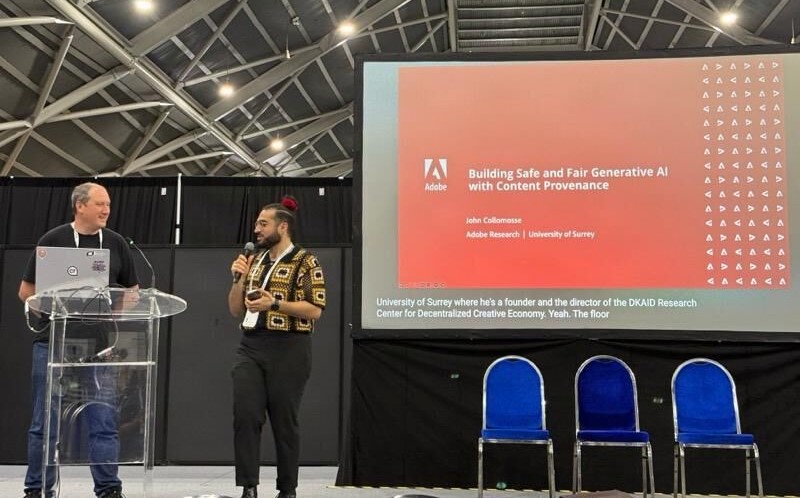ICLR is globally renowned for presenting research on all aspects of deep learning used in the fields of artificial intelligence, statistics and data science. With two papers accepted and presented at the GenAI Watermarking workshop, the conference offered DECaDE researchers an opportunity to share MultiNeRF; a multi-watermarking framework they’ve developed to secure ownership and attribution in 3D content and a paper on Watermark co-existence and optimal ways to ensemble them.

DECaDe Director John Collomosse delivered a talk on Building Safe and Fair Generative AI with Content Provenance, with reference to his research in partnership with Adobe’s Content Authenticity Initiative. The team has combined emerging open standards on media provenance (C2PA; the Coalition for Content Provenance and Authenticity) with watermarking to help users attach durable information on the ownership and authenticity of digital media. The technologies presented include a way to watermark 3D models, and a way to encourage multiple watermarks from different providers to co-exist in an image – further encouraging interoperable open standards for provenance.
John was also invited to present at a panel discussing the interaction of policy and watermarking, with a view to emerging legislation on AI labelling and how provenance markers such as watermarks can help creators better indicate opt-in/opt-out preference for the use of their work in AI.
Yash Kulthe, DECaDE PhD student who’s paper MultiNeRF: Multiple watermark embedding for neural radiance fields was presented, commented,
“I’m incredibly excited to see our work, MultiNeRF, featured at the Gen AI Watermarking Workshop at ICLR 2025. This project tackles a growing challenge in the world of 3D content: how do we protect ownership and track attribution when media can be so easily created, shared, and modified? With MultiNeRF, we’ve developed a framework that embeds multiple invisible watermarks directly into 3D models, allowing for scalable, secure attribution without sacrificing visual quality.
It’s exciting to contribute something that sits right at the intersection of technical innovation and real-world impact – especially as the need to prove who created digital content – and whether it’s been altered becomes more important across industries”.
The papers presented at the conference can be read here;
MultiNeRF: Multiple Watermark Embedding for Neural Radiance Fields – Yash Kultheet al.
On the Coexistence and Ensembling of Watermarks – Aleksandar Petrov et al.
For queries please contact: decade@surrey.ac.uk

